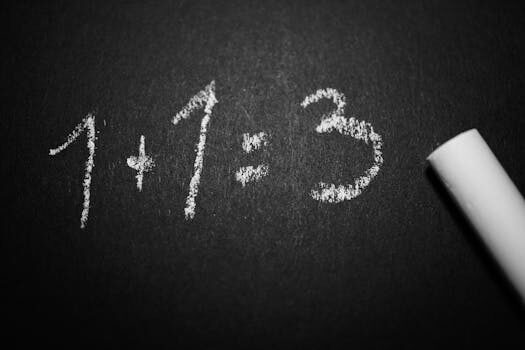Polish numbers, ordinal numbers & fractions

Learning Polish numbers, ordinal numbers & fractions is an essential step for anyone looking to gain proficiency in the Polish language. These numerical concepts are central to everyday communication, providing a foundation for discussing quantities, positions in a sequence, and parts of a whole. With this guide, you'll gain a comprehensive understanding of how to count, use ordinal numbers, and express fractions in Polish.
What are Polish Numbers, Ordinal Numbers & Fractions?
Polish numbers, including cardinal numbers, are used to indicate quantity. Ordinal numbers in Polish denote position or order in a sequence, while fractions are used to describe parts of a whole. All these forms are crucial in various aspects of daily life, such as telling time, shopping, or giving directions.
In the Polish language, numbers also align with the grammatical gender of nouns. This can influence the form a number takes, especially for numbers one through five, making gender considerations a vital part of learning Polish numerals.
Additionally, Polish numbers have unique pronunciation rules, and there are many resources available, including audio guides, to help learners master these sounds.
How Do You Count From 1 To 100 in Polish?
Counting in Polish from 1 to 100 involves learning a set of basic numbers and then combining them to form larger numbers. The counting structure is logical and, once you understand the basics, relatively easy to master.
Polish numbers from 1 to 100 can be divided into tens and units. For instance, twenty-one in Polish is "dwadzieścia jeden" (20 + 1).
- 1 - jeden
- 2 - dwa
- 10 - dziesięć
- 20 - dwadzieścia
- 100 - sto
Practicing these numbers with a Polish numbers pronunciation guide can greatly aid in learning the correct sounds.

What Are the Polish Ordinal Numbers?
Ordinal numbers in Polish are used to express order, such as first, second, third, and so on. Similar to English, Polish ordinal numbers are formed by adding a suffix to the cardinal number, typically "-y," "-a," or "-e," depending on the gender and case of the noun they modify.
Examples of Polish ordinal numbers include:
- 1st - pierwszy
- 2nd - drugi
- 3rd - trzeci
Understanding the correct usage of these forms is crucial in many everyday situations, such as setting appointments or celebrating anniversaries.
When Should You Use Ordinal Numbers in Polish?
Ordinal numbers in Polish are used in similar contexts as in English. They appear when discussing dates, places in a competition, or the sequence of events. However, they also conform to the gender distinctions in Polish, which means you must match the number's ending with the noun's gender and case.
For example:
- He is the first man - On jest pierwszym mężczyzną.
- She is the second woman - Ona jest drugą kobietą.
These rules are vital for clear and correct communication in Polish.

How Do You Write Polish Numbers Handwritten?
Handwriting Polish numbers is largely similar to writing numeric figures in English. However, it's essential to practice writing out the number words in Polish to understand their spelling and gender forms.
Here's an example of Polish numbers written out:
- Jeden
- Dwa
- Trzy
Practicing handwriting can help solidify your understanding of Polish number structures and improve your overall language skills.
What Are Common Fractions in Polish?
Fractions in Polish are used to express parts of a whole, and they are particularly important in mathematics, recipes, or measurements. Like ordinal numbers, fractions in Polish must agree in gender with the nouns they describe.
Common Polish fractions include:
- 1/2 - połowa
- 1/3 - jedna trzecia
- 1/4 - jedna czwarta
Learning to use these fractions correctly is a valuable skill for anyone looking to become fluent in Polish.

How Do You Say the Days of the Week in Polish?
The days of the week in Polish are important vocabulary terms that often incorporate ordinal numbers. Knowing how to say and understand these terms is essential for planning and scheduling.
The days of the week in Polish are:
- Monday - poniedziałek
- Tuesday - wtorek
- Wednesday - środa
- Thursday - czwartek
- Friday - piątek
- Saturday - sobota
- Sunday - niedziela
These terms are crucial for daily communication and are often used alongside ordinal numbers when arranging appointments or discussing events.
Additional Resources for Learning Polish Numerals
Learning Polish numbers can be enhanced with additional resources such as audio guides, video tutorials, and interactive exercises. Here's a helpful video that provides a clear pronunciation guide for Polish numbers:
Moreover, online platforms and language learning apps often feature lessons on Polish cardinal and ordinal numbers, complete with interactive quizzes to test your knowledge.

Preguntas Relacionadas Sobre Polish Numbers, Ordinal Numbers & Fractions
How to Say 1, 2, 3, 4, 5, 6, 7, 8, 9, 10 in Polish?
Here's how you say the numbers 1 through 10 in Polish:
- 1 - jeden
- 2 - dwa
- 3 - trzy
- 4 - cztery
- 5 - pięć
- 6 - sześć
- 7 - siedem
- 8 - osiem
- 9 - dziewięć
- 10 - dziesięć
Each number has a unique pronunciation, which you can master with practice and the help of audio recordings.
What Are Ordinal Numbers and Fractions?
Ordinal numbers in Polish denote an item's position in a sequence. For example, "first" is "pierwszy," "second" is "drugi," and "third" is "trzeci." Fractions, on the other hand, express parts of a whole, such as "half" (połowa) or "quarter" (ćwierć).
Both ordinal numbers and fractions are integral to various aspects of communication, including mathematics and daily activities.
How Are Numbers Written in Poland?
In Poland, numbers are written similarly to how they are in English, using Arabic numerals. However, when written out in words, they must conform to the rules of Polish grammar, which include gender agreements and proper case endings.
For example, the number 21 is written as "dwadzieścia jeden" and would have different endings depending on its usage in a sentence.

What Are the Collective Numbers in Polish?
Collective numbers in Polish are used to express quantities as a group. An example would be "dozen" (tuzin) or "score" (dwadzieścia). These numbers are less commonly used but are still an important part of the language.
Understanding their correct use can help in more advanced Polish language learning.

Leave a Reply